Cold, rain, wind, winter conditions can be harsh on the extremities of the body, and particularly on the feet.
So manufacturers have developed specific ranges to keep you riding comfortably during this period. And because winter is also characterized by low light levels, many models feature reflective elements to increase cyclist visibility.
WINTER ROAD AND MOUNTAIN BIKE SHOE FEATURES
- Design: uppers, waterproofing, thickness ;
- Materials: technical membranes to combat the elements, carbon, nylon ;
- Tightening system and fit: scratch, wide cut;
- Shoe covers: advantages and conditions of use.
ALL YOU NEED TO KNOW ABOUT ROAD AND MOUNTAIN BIKE SHOES
You might think that shoes are relatively simple in design. In truth, it's a concentrate of technology, and shoes have evolved a great deal in recent years to ensure greater comfort and better performance.
SHOE DESIGN
Taking the design of summer shoes and adding several elements to combat the cold, rain or snow, winter shoes, whether for road or mountain biking, are designed to be comfortable and easy to wear. MOUNTAIN BIKE, are most often recognized by their high uppers. This shape envelops the ankle, which, like the foot, is very sensitive to the cold.
In addition, the overall design of winter shoes is such that no infiltration is possible, at the junction with the tights or pants, at the seams, but also at the wedges. It's this last point that clearly differentiates winter shoes from overshoes which don't fully protect against water splashing from the ground.
MATERIALS
In winter, the environment is not kind to equipment: humidity, temperature variations, mud, salt... equipment suffers and wears out quickly.
Taking these constraints into account winter boots are designed with thick, warm, highly resistant materials, combined with the latest-generation membranes, such as those from the famous Gore-Tex brand, which combine maximum protection with optimal breathability. The upper part of the upper is often fitted with a neoprene cuff that fits snugly around the ankle to prevent the passage of water.
The result: a much heavier weight than summer models, but incomparable comfort, even after several hours.
Concerning insolesWinter models are usually made of nylon, possibly reinforced with carbon for added strength. However, the most demanding competitors will find a few models with carbon soles to maintain the same level of pedaling rigidity all year round.
TIGHTENING SYSTEM AND ADJUSTMENT
As with our summer models, all types of tightening systems are available (laces, Velcro, micrometric buckle, knob), depending on price, riding style and expectations. But here, the tightenings, and first and foremost the Velcro fasteners, are designed to be handled with thick gloves.
In terms of fit, these shoes are generally characterized by a wide cut, enabling you to use warm socks or even warmers without having your foot too tight, synonymous with discomfort and loss of thermal efficiency. However, with Gore-Tex footwear, we recommend wearing relatively thin socks to help wick away moisture, since warmth will be provided by the footwear. Socks that are too thick - which would seem to be the natural choice in winter - risk absorbing perspiration and creating an unpleasant feeling of dampness.
SHOE COVERS
Although winter boots are the ideal solution for riding with peace of mind throughout the cold season, their relatively high cost means they are best reserved for the hard-core cyclist.
If you only go out occasionally during the winter, overshoes are already a great help for outings in bad weather. They're very affordable, and can be removed as needed!
WHICH SHOES ARE RIGHT FOR ME?
Stiffness, weight, ventilation, material resistance, type of sole or fastening are all criteria to be considered.
Hiking
A model with a rubber outsole that's as comfortable and grippy on the pedals as it is on foot will get you out of tricky situations when getting off the bike. Shoes that are both waterproof and warm, and usually high-cut, are ideal for Sunday outings, offering a good balance between pedaling efficiency and comfort.
Cross-Country
Here we can choose a model that remains high-performance despite the extra weight of its waterproof, high-cut construction. Carbon-reinforced or even 100% carbon soles enable rigorous training to continue in winter.
All-Mountain
Here, we recommend a warm model for high-altitude outings. The waterproof membrane and high-mounted upper will be a great help if you come across snow! Here again, a well-cramponed sole is essential, as are reinforcements around the boot to resist abrasion when walking. A shoe with a breathable membrane will also enable you to efficiently wick away perspiration and keep your feet dry all day long.
Enduro
Winter shoes are very supportive, thicker and heavier than their summer counterparts, which can reduce the riding sensation. But let's not forget that a frozen foot is no longer sensitive at all! Reinforced, high-cut shoes provide protection against the elements and shocks. Feet stay dry in all situations.
DH / Freeeride
These disciplines are not the most popular in winter. But for hard-core riders who don't let the cold stop them, high speeds or time spent waiting for the shuttle or shaper means that feet get cold very quickly. A warm model that can accept a pair of thick socks is ideal.
Road
Manufacturers offer high-performance winter models, sometimes using carbon to stiffen the soles. Competitors will find maximum sensations and performance. Some winter shoes focus more on warmth than waterproofing, and are more affordable. Others offer both. Depending on the region in which you ride, these criteria need to be studied closely. In winter, visibility on the roads can be reduced: reflective stripes, or even fluorescent colors, are an effective way of signalling your presence.
Gravel and Cyclocross
In both these disciplines, it's important to be able to get off the bike and walk over obstacles or very rough sections. Crampon soles are preferable.
In Cyclocross, good breathability is essential for high-intensity effort. For a day-long winter outing on a Gravel bike, there's nothing better than materials that retain heat even when stationary!
Découvrez tous nos conseils & Tutoriels
EQUIPMENT - MTB Socks
-
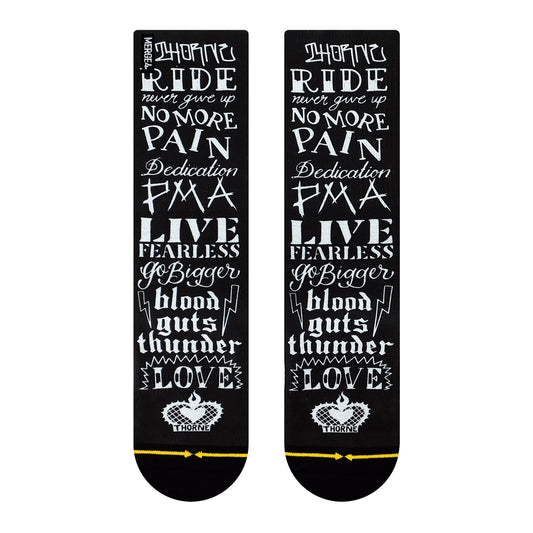
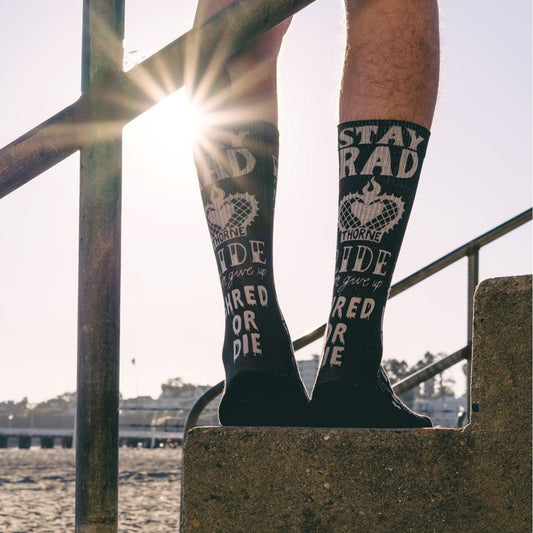
MERGE4 RICK THORNE STAR RAD Socks
Regular price 14,99 €Regular priceUnit price per -
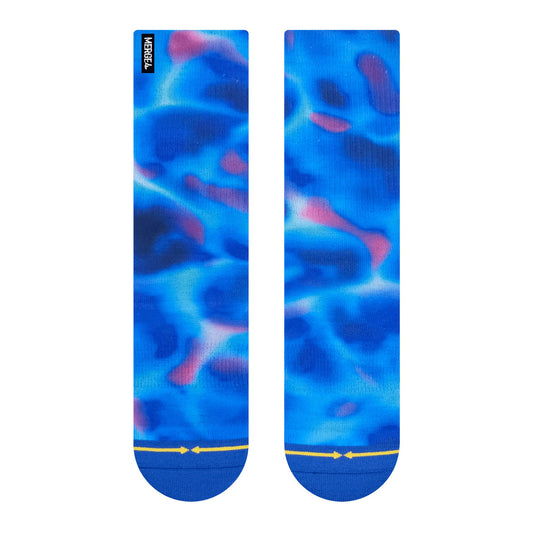
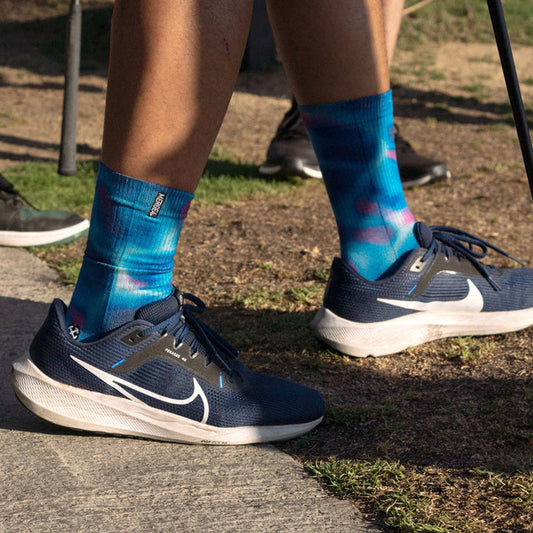
MERGE4 DJB BLUE WATER Socks
Regular price 14,99 €Regular priceUnit price per -

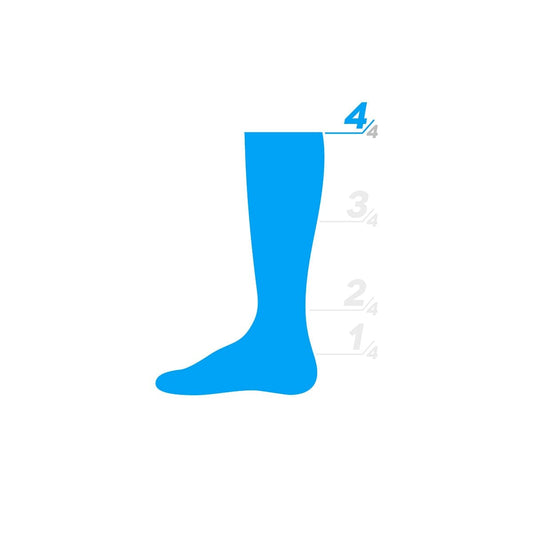
O'NEAL PRO MX VICTORY Socks Black
Regular price 14,90 €Regular priceUnit price per -
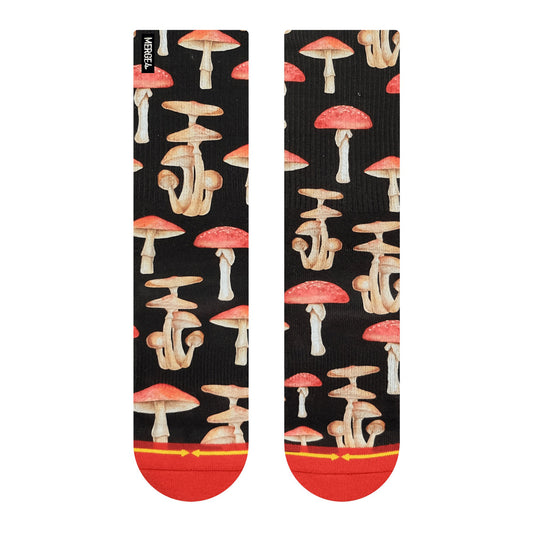
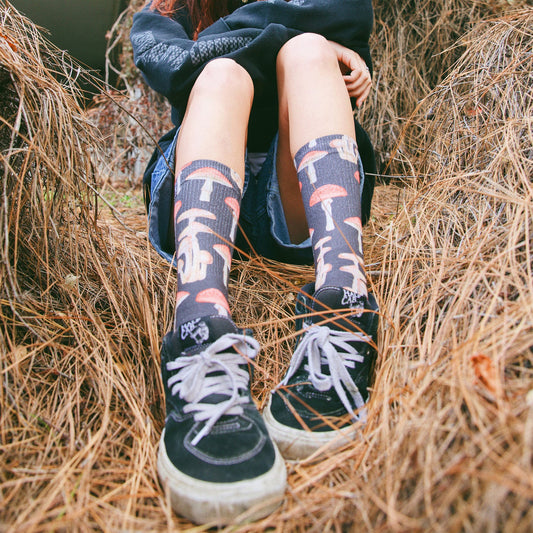
MERGE4 HANNA MINCK MUSHROOM Socks
Regular price 14,99 €Regular priceUnit price per -
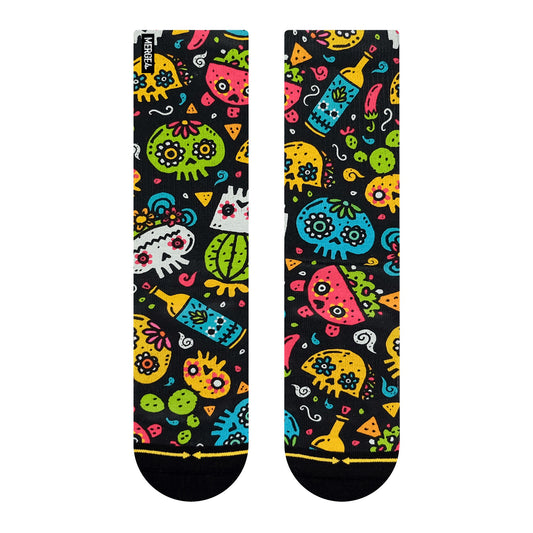
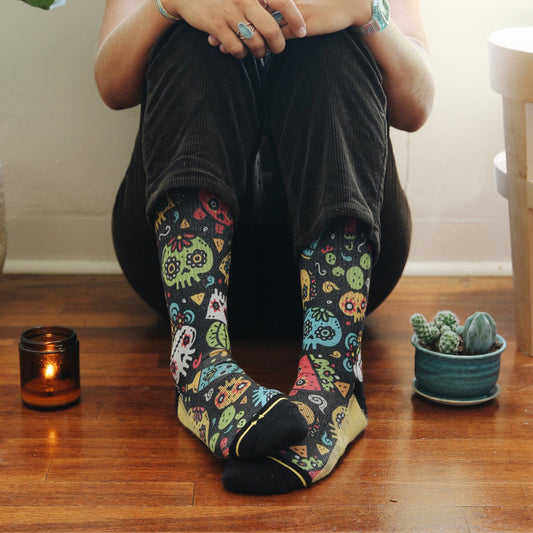
MERGE4 WALMAZAN SUGAR SKULL MINI Socks
Regular price 14,99 €Regular priceUnit price per -
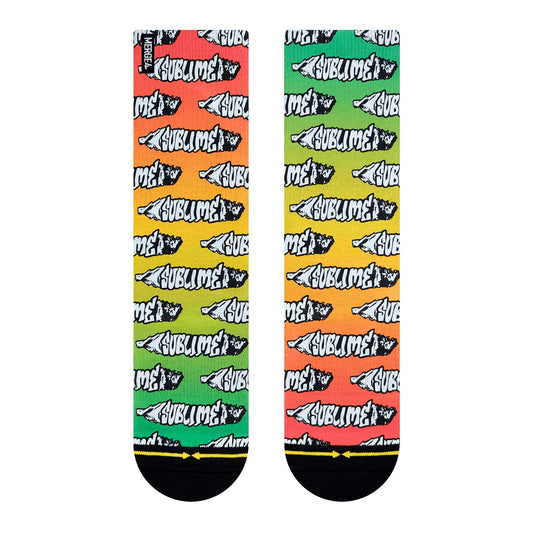
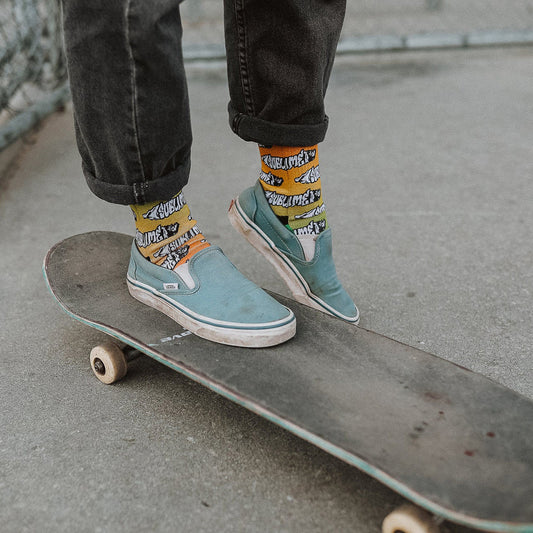
MERGE4 SUBLIME JOINTS Socks
Regular price 14,99 €Regular priceUnit price per -
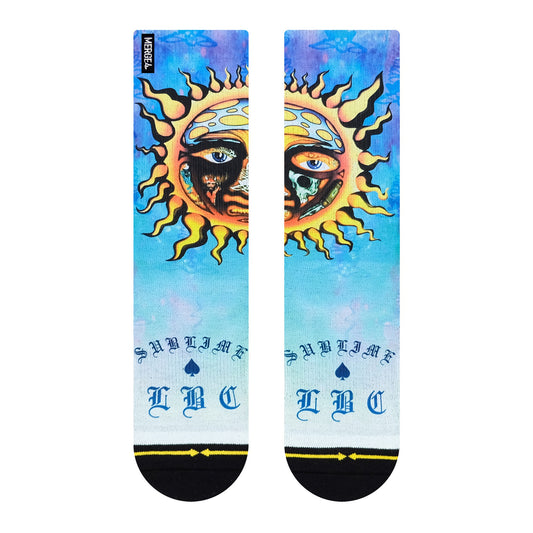
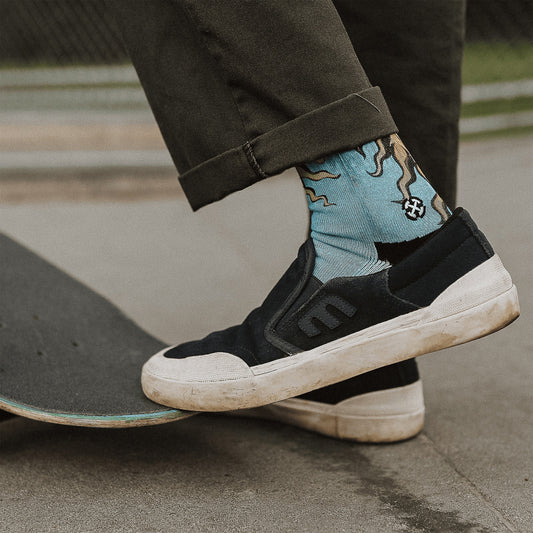
MERGE4 SUBLIME BLUE SUN Socks
Regular price 14,99 €Regular priceUnit price per -
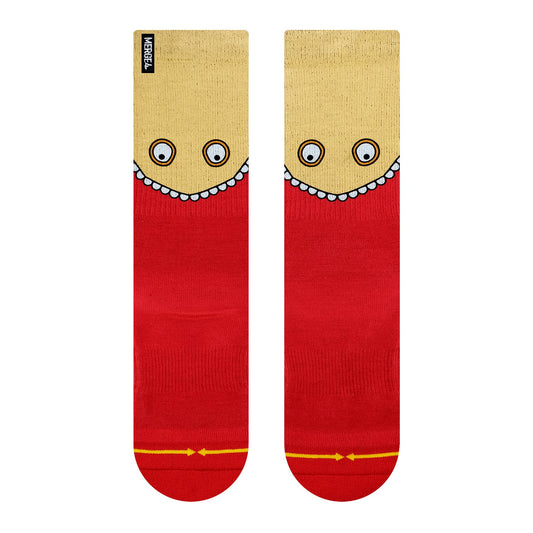
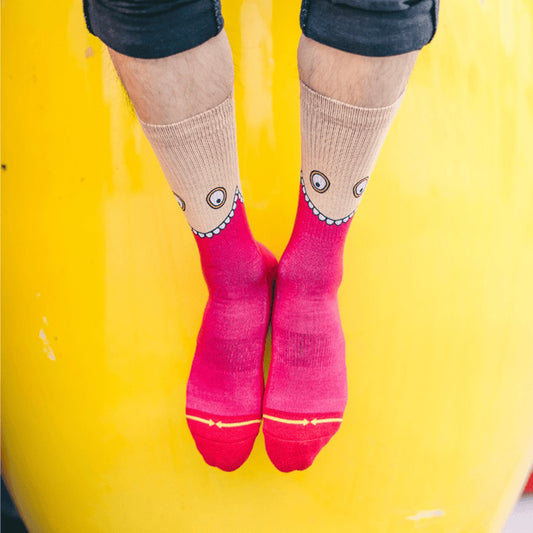
MERGE4 NATAS KAUPAS SHOE EATER Socks
Regular price 14,99 €Regular priceUnit price per















